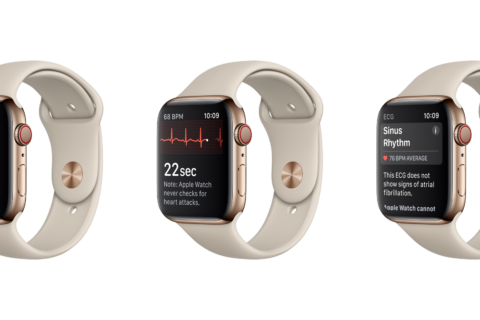Could the Apple Watch Save Your Life?
Canadians now have access to the Apple Watch ECG app and irregular heart rhythm notification feature. Both the app and the notification help identify atrial fibrillation (AFib).
I come from a family of a-fibbers (and I’m not talking about their charming tendency to enhance their stories with a wee bit of fiction). My father, two uncles and a sibling have all been diagnosed with atrial fibrillation (AFib.) While the exact incidence of familial AFib isn’t known, studies have shown that up to 30% of people with AFib may have a relative with the heart condition, according to the Mayo Clinic.
Needless to say, I was intrigued, so I decided to try out the Apple Watch ECG app and irregular heart rhythm notification feature, which together help identify potential incidents of AFib. (The ECG app is part of a free update to watchOS 5.3 Series 4, and the irregular rhythm notification feature works on Series 1 and higher.)
Before I reveal my results, here’s a quick primer on what AFib is according to the Heart & Stroke Foundation of Canada. It’s described as an irregular heart rhythm, or arrhythmia, that is caused by electrical signal disturbances in the upper chambers of the heart, or atria. When the signals are regular, the blood is pushed from the atria into the lower chambers (the ventricles), where it is pumped to the rest of the body. If you have AFib, the upper and lower chambers don’t beat in sync, which means they aren’t pumping efficiently.
AFib, which can be treated with medication, affects approximately 200,000 Canadians. If untreated, it can increase your chances of having a stroke or experiencing heart failure. The risks increase with age, or if you have health issues like diabetes or high blood pressure or other heart-related conditions.
With AFib, some people notice that their heart is beating very quickly (sometimes more than 150 beats per minute)—even though they’re not doing anything physical. Others might feel like it’s skipping a beat, while some may have no symptoms, which is why this ECG app and irregular rhythm notification feature might be a real lifesaver.
Here’s how they work:
Irregular rhythm notification:
In addition to the high heart rate and low heart rate notifications, your Apple Watch can now alert you when your heart is beating irregularly and suggest that you see your doctor if you haven’t already been diagnosed with AFib. You’ll receive this notification if an irregular rhythm has been detected on five rhythm checks taken over a minimum of 65 minutes. Unlike the ECG app, which only works on Series 4 because it has electrodes built into the back crystal and Digital Crown, this notification works on Series 1 or later. How accurate is it? According to data collected from the Apple Heart Study, almost 80% of the participants who wore the watch, as well as a clinical ECG patch, received the notification and showed AFib on their ECG patch. Of note, 98% who received the notification showed other arrhythmias on their ECG patch.

ECG app:
This app, which had to be approved by Health Canada because it is considered a medical device, allows you to take an electrocardiogram (ECG) right from your wrist. It’s really simple to do. Launch the ECG app on your Apple Watch Series 4 and hold your finger on the Digital Crown. After 30 seconds, you’ll receive a notice that your reading is sinus rhythm (which means it’s normal and has nothing to do with your sinuses), AFib or inconclusive. At this point, you can also add in symptoms like rapid, pounding or fluttering heartbeat, skipped heartbeat, fatigue, shortness of breath, chest tightness or pain, fainting, dizziness, other or none. The reading, and any symptoms you added, will be sent to your Health app on your iPhone, and you can email a PDF of the reading to your doctor.
So, how accurate is it? According to clinical trials, when the results of readings from the ECG app were compared with 12-lead ECG readings done by a cardiologist, the ECG app picked up 98.3% of instances of AFib and 99.6% of sinus rhythms. While it might be tempting to be constantly taking ECGs, Apple recommends you take it when you’re feeling symptoms like a rapid or skipped heartbeat. It’s important to know that this app can’t tell you if you’re having a heart attack or stroke. If you feel any chest pain, pressure, tightness or what you think might be a heart attack, call 911.
The verdict:
I was relieved that my ECG readings were all sinus. I did have some inconclusive results, which might be because I was moving around. You need to be seated with your arm resting on a hard surface when you take the reading, and the Apple Watch needs to be snug around your wrist. There are stories online about the app alerting people to potential heart issues, including this story from a c|net reporter who tested the watch and it “detected something strange about her heart rhythm.” Concerns about false positives, or cases where the AFib rhythm isn’t detected, have also been raised by some physicians, but given my family history I still find it comforting to know that any irregular patterns might be detected. And knowing that I can quickly take an ECG if I experience any symptoms is pretty empowering.









